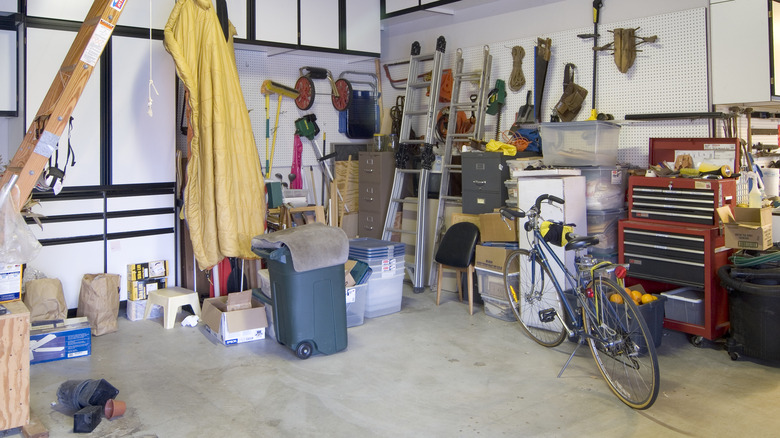Here's Why Your Garage Is Always So Cold
From Texas' severe winter storms in 2021 to 100-year low temperatures recorded in Boston, Massachusetts and Providence, Rhode Island in 2023, it's clear that many Americans will have to adapt to colder weather as global climate change takes its toll. The Department of Energy offers best practices on how to build and maintain homes in order to mitigate the impact of cold weather, be it constructing appropriately snow-bearing roofs or having enough insulation and waterproofing to promote thermal resiliency. Even if your overall house is cozy, warm, and temperature-controlled, though, you probably still brace yourself for that morning shock of stumbling into a garage that feels like Antarctica.
Amid all the technological advances of the present day — after all, we live in an age where many of the cars in those freezing garages have remote start and heating capabilities to make sure they're prepared for your arrival — why is it that garages continue to be build without insulation, heating, or anything that might make them more enjoyable to spend time in during the winter? It's not laziness. Rather, it has to do with efficiency and safety.
For one thing, it's typically much more complicated to insulate a garage compared to other rooms. A building's frame and air-sealing features are one of the most important parts of keeping stable indoor temperatures, but large garage doors make it much harder to get an airtight seal — not to mention the concrete flooring which supports your car is adept at absorbing both heat and cold. The safety component, though, is a more surprising aspect.
Fully insulating your garage from the cold could lead to safety concerns
You probably store a lot of things in your garage, ranging from car maintenance chemicals like antifreeze, to a gas-powered lawnmower, to yard care and gardening tools, as well as leftover supplies from the last time you painted a room. Sensing a theme?
Yes, the fumes from any of these things — antifreeze, gasoline, and so on — could be toxic in large quantities. They are things we don't want out in the cold weather, but also things we don't want in the house. Thus, from a building perspective, it is advised to not incorporate your garage into the overall home's conditioned space by insulating its outside-facing walls. Instead, you should ensure that the walls connected to your interior rooms are properly insulated from the garage, if they aren't already.
Of course this isn't to say there's nothing you can do about your garage being too cold, which is a particular nuisance during winter months if you use that room for woodworking, painting, or any number of messier activities best kept outside of your living spaces. You can use an electric space heater — though note that space heaters can be deadly if used improperly, and the lack of insulation will cause heat loss. You can also consider re-upping your garage's weatherstripping and sealing smaller cracks (some types of caulk are better for concrete surfaces, like self-leveling or silicone). Ultimately, there's only so much you can do for this ancillary room, so at the end of the day there's also nothing wrong with retreating from your cold garage until spring comes back around.

